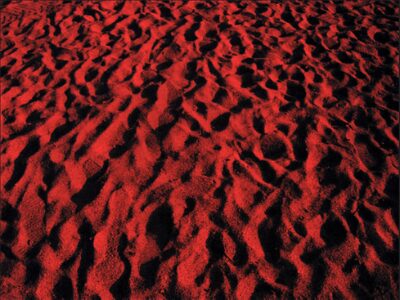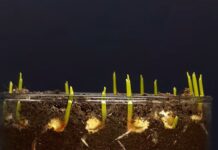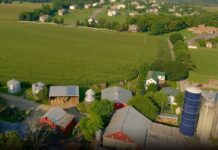
Introduction
Hello growers, we are back with excellent crop knowledge suitable to red soil and red soil advanced. Soil is the mixture of rock fragments and organic materials that spreads over the surface of the earth. Parent material, climate, time, and biodiversity including human activities are key factors influencing soil formation. India is a complex country with a range of relief features, landforms, climatic regions, and varieties of vegetation. They also contributed to the growth of the various soil types in India. India is primarily an agrarian region. We’re waiting for what? Let’s get into the specifics of the best suited red soil crops.
Step by Step Guide on Crops Suitable for Red Soil
Red soil is a very significant soil resource that has major implications for sustainable agricultural development and sound economic growth. Red soil grows under the deciduous forest in a tropical environment and has thin organic-mineral layers that cover a yellowish-brown leached base. Red soils are typically derivative of crystalline material. These are typically poor growing soils, low in nutrients and hard to plant because of their low capacity to retain water. Crystalline and metamorphic rocks such as acid granites, gneisses, and quartzites are the main parent rocks.
Many red soils came into being owing to the weathering of ancient crystalline and metamorphic rocks. These red soils are usually red in color, often grading into brown, chocolate, yellow, gray or even black. This soil’s red color is due more to the massive diffusion than to overly high iron content.
Red soils are typically low in lime, magnesia, phosphates, phosphorus, and humus but high in potash. The red soil composition ranges from sand to clay, the bulk of which are loams. The red soils on the uplands are thin, weak and gravelly, sandy or Stoney and porous but they are soft, dark and fertile in the lower areas.
 Red Soil in India
Red Soil in India
Red soils represent the third-largest Indian soil group covering an area of approximately 3.5 lakhs sq. Km or 10.6 percent of India’s land over the Tamil Nadu Peninsula in the south to Bundelkhand in the north and Rajmahal in the east to Catch in the west. On their south, east, and north, they surround those red soils. In its hydrated form, it appears yellow color.
The red soil’s color varies from red to white, chocolate, yellow, blue, or even black at times. Red soil is made up of a high percentage of iron content, responsible for its color. This red soil is low in phosphorus, humus, phosphoric acid, magnesium, and lime, but very rich in potash, varying from neutral to acidic pH levels. This is formed by weathering the ancient crystalline and metamorphic rocks, primarily acid granites and gneisses, quartzite rocks, and felspathic rocks. The lower portion of red soil is dark and rich in color, while the upper layer is sandy and porous. Approximately 10.6% of India’s total area is covered by red soil, including Tamil Nadu, Karnataka, Southeast Maharashtra, East Andhra Pradesh, and Madhya Pradesh, Orissa, Chhattisgarh, Jharkhand, South Bihar, West Bengal (Birbhum and Bankura), Uttar Pradesh (Mirzapur, Jhansi, Banda, and Hamirpur), Aravallis, East Rajasthan, Assam, Nagaland, Manipur, Mizoram, Tripur.
The red soils cover a large area of about 3.5 lakh sq km which represents 10.6 percent of the country’s total geographical area. Red soils are scattered over nearly the whole of Tamil Nadu, parts of Karnataka, southeast of Maharashtra, eastern parts of Andhra Pradesh and Madhya Pradesh, Chhattisgarh, Orissa and Chota Nagpur in Jharkhand.
Categories of Red Soil
Indian red soils are classified into two groups below. They are;
- Red Loam Soil
- Sandy Red Soil
Red Loam Soil-The decomposition of granite, gneiss, and diorite rocks formed these red loam soils. This soil is cloddy, porous and lacks concretion materials. Red loam soil is lower in nitrogen, phosphorus and organic matter but mainly rich in potash and leaching.
Tiny layers of these soils, and less fertile. These red loam soils are found mainly in Karnataka (districts of Shimoga, Chikmaglur, and Hassan), Andhra Pradesh (Rayalaseema), Telangana, East Tamil Nadu (districts of Tiruvannamalai and Cuddalore in particular), Orissa, Jharkhand (districts of Chotanagpur), Uttar Pradesh (districts of Bundelkhand), Madhya Pradesh (districts of Balaghat and Chhindwara), Rajasthan (districts of Banswara, Bhilwara, Bundi, Chittaurgarh, Kota, and Ajmer), Meghalaya.
Sandy Red Soil- The disintegration of granite, quartzite, and sandstone has created these sandy red soils. There is one friable soil, with a high content of sesquioxide clay secondary concretions.
Its color varies from red to yellow, due to the presence of haematite and limonite. Sandy red soils have been leached rightly occupying parts of the former eastern Madhya Pradesh (excluding the Chhattisgarh region), the neighboring Odisha, Andhra Pradesh, and Tamil Nadu (the Eastern Ghats and Sahyadris).
The Agricultural Research Council of India (ICAR) has classified red soils into four categories: (a) red soils, (b) red gravel soils, (c) red and yellow soils, and (d) mixed red and black soils.
Color of Red Soils
Regardless of the presence of iron oxide the soil is red. As calcareous, granites, gneisses, and quartzites eroded the clay covering the rocks, it remains intact with any non-soluble material type. Once the soil is above water, iron oxide forms in the clay, giving the soil a distinctive red color. The red color is more of a high percentage of iron oxide content due to the big diffusion.
Growing Root Crops in Red Soil
Root crops are demanding feeders, such as potatoes and ginger, that respond well to this superior fertility. There are still some frequent problems associated with these soils, however, and the most prominent of these is related to the availability of phosphorus. The negatively charged phosphate ion is highly unstable and can form insoluble compounds with calcium (tri-calcium phosphate), iron, aluminum, and manganese readily. In red soils the main issue is iron and due to an excess of iron these soils are colored red. Phosphate and iron easily form the insoluble iron phosphate, and then it is a constant struggle to control phosphorus for the fertility of high growth.
 Role of Nutrients in Red Soil
Role of Nutrients in Red Soil
Plants use micronutrients in small quantities, and these nutrients may restrict plant growth as there may not be an appropriate amount in the soil. To obtain the desired yield, micronutrients are required for the proper biochemical transformation within the plant body.
Iron (Fe) – Iron requires many oxidations and functions in plant reactions to the reduction. It also acts as a necessary factor for many growth hormones in enzymes.
Copper (Cu) – It functions as an enzyme carrier of electrons taking in oxidation-reduction. And controls on all plants breathing activity.
Manganese (Mn) – It acts as an oxidation catalyst, and in plants acts as a reduction reaction. It functions as a multiple enzyme activator too.
Zinc (Zn) – Zinc is essential for many enzymatic reactions. It helps in forming hormones for development.
The quality of mineral nutrients in red soil not only varies with the climate but also impacts plant species productivity.
Crops Suitable for Red Soil
Cotton, wheat, rice, beans, millets, tobacco, oilseeds, potatoes, and fruits are some of the appropriate crops for red soils. The red soils are mainly loamy and thus, like the black soils, can not retain water.
Such soils can be used profitably for a variety of crops such as groundnut, maize, soybean, Bengal gram, pigeon pea, castor seed, green gram, red gram, jute, tea, cashew, cacao, grapes, banana, papaya, and mango.
Chemical Composition of Red Soils
- Lime, magnesia, phosphates, nitrogen, and even humus are bad.
- These are deficient in phosphorus, magnesia, phosphates, nitrogen, and humus.
- They are potash-rich and potassium-rich.
Basic Properties of Red Soils
The key yield-limiting factors for red soils are rich in iron-aluminum oxides with high phosphate fixation efficiency, low pH level and organic matter content, and poor nutrient availability. The fertility of main red soils was moderate or low according to the results of the second national soil census data. The supply of red soils with soil phosphorus (P) was assessed as seriously deficient. Those severe P-deficient red soils cover much of the area’s farmland. Red soil potassium (K) is not as poor as phosphorus by 26.3 and 13.6 percent of the red soil portion, respectively, considered moderate and severely deficient. Soil nitrogen (N) status of red soils is located between phosphorus and potassium with most of them in the range of moderate and extremely deficient.
Characteristics of Red Soils
Red soil texture can shift from sand to clay, the majority of which are loams. Red soils on the uplands are soft, gravely, and porous, light-colored soils on which food crops such as Bajra can be grown. They are beautiful, deep dark and fertile in the lower areas though.
Red soil composition varies from sand to clay, most of which is loam. Their other characteristics are porous and friable, lack lime, free carbonates and a small number of soluble salts. Their chemical composition contains 90.47% of non-soluble content, 3.61% of iron, 2.92% of aluminum, 0.70% of magnesium, 0.56% of lime. And also contain 1.01% organic matter, 0.30% carbon dioxide, 0.24% potash, 0.12% soda, 0.09% phosphorus and 0.08% nitrogen. Though major regional variations in the chemical composition are observed.
In general, the lime, magnesia, phosphates, phosphorus, humus, and potash are deficient in these soils. Intense leaching poses a threat to these soils. They are marked by stunted growth in the forest and are suitable for dry farming.
 Advantages of Red Soil
Advantages of Red Soil
- Red soil is the type of soil that is created by weathering metamorphic rocks and grows in dry, moist, and temperate climatic conditions.
- Red soils have greater potential for drainage than other soils and are porous, fine-grained and fertile.
- Red soils have a higher content of iron, aluminum, and lime and often have a high acidic condition.
Organic Fertilizers used in the Red Soil Region
Commonly used organic fertilizers in the red soil area come mainly from green manure, farmyard manure, and crop residues. In this area, rice and rapeseed are the major field crops covering 55 and 11 percent of the total cropped area, respectively. The amount of rice straw and rapeseed stalk accounts for 70 to 75 percent of total crop residues in this area and 8.5 to 11 percent.
Double rice (two rice crops per year) and winter rapeseed are the main crop pattern producing 9500–1200 kg hm2 of straw annually, but the rapeseed yields only about 1660–6900 kg hm2 of annual residue. Dryland crop straw is mainly used as feed and cooking fuel for livestock and only a small portion of it is returned to the field.
Radish (Raphanus sativus) and milk vetch (Astragalus sinicus L.) are used as winter-green manure producing 10,500 to 15,000 kg hm2 of fresh biomass annually. The most common livestock manures in the area were pig and cattle manure. Crop, particularly rice, is essential for the source of soil organic matter above and below-ground residues.
That’s all the folks about crops that match red soil and red soil benefits. You may want to know the Balcony Garden Design Ideas in India.
Related Posts

 Red Soil in India
Red Soil in India Role of Nutrients in Red Soil
Role of Nutrients in Red Soil Advantages of Red Soil
Advantages of Red Soil




